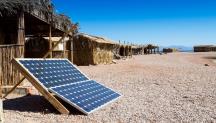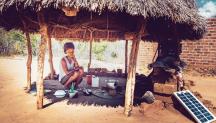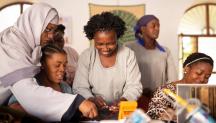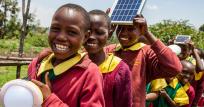
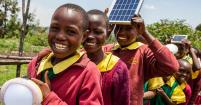
Lower Cost, Stable Supply, Economic Growth - a Village in Mali Shifts to Solar
Newsletter
Landlocked Mali is one of the largest countries in Africa. It is also heavily reliant on fossil fuel imports, exposing it to price volatility and unreliable supply. As a result, around three-quarters of the country’s mostly rural population of 18 million lack basic energy needs like electricity access.
Around the turn of the millennium, after it became a priority issue for Mali’s government and local non-governmental organisations (NGOs), the rural electrification rate increased from a fraction of 1% in 1995 to over 17% in 2015. This push was originally reliant on diesel-powered installations, but reliance on fossil fuels soon showed its limits in terms of costly fuel imports and increased air pollution.
These factors drove local NGOs such as Mali-Folkecenter Nyetaa to try solar-based hybrid systems for the electrification of villages located far from the grid. This was the case with Zantiebougou, a village of 6 000 inhabitants located hudreds of kilometres from Bamako, which the NGO electrified using a 55 kilowatt (kW) solar photovoltaic (PV) system, backed up by a diesel generator.
The economic benefits to the villagers were immediate, with tariffs falling by as much as one-third compared to diesel-only systems. The hybrid system also enabled a longer daily supply of electricity—from as little as four hours per day wth the diesel system to 15 hours. IRENA’s latest data has shown that renewables increasingly provide electricity at costs competitive with, or lower than, fossil-based power. Additionally, a report on Solar PV in Africa found that stand-alone solar PV mini-grids on the continent can cost as low as USD 1.90 per watt for systems larger than 200 kilowatts.

Ready for change
“Before the electrification of Zantiebougou I had a kerosene-powered refrigerator, which consumed one litre of kerosene daily. This used to cost USD 1.30, for a daily revenue of USD 4.60”, said Mrs Samaké Rahama Diarrassouba, a local refreshments vendor. “The electrification of my village allowed me to get another refrigerator, enabling me to expand the range of the products that I sell. Today, I sell up to USD 7.30 on normal days and up to USD 27.40 on market days”.
Mrs Samaké also operates a small canteen in the centre of Zantiebougou, whose prospects were improved with the introduction of hybrid electricity: “Due to the fact that my canteen was only lit with a flashlight, I could not really work after dusk. Today, however, I work until 10 pm. The premises are well-lit and can be better kept clean and attract a lot of customers, especially on Saturdays and on the days before the weekly market days. The extra money that I make allows me to contribute to social events, on top of paying schooling for my children and and preparing delicious meals for my husband”.
Mali-Folkecenter Nyetaa’s work in Zantiebougou has been extended to help organize women into cooperatives for the local transformation of shea butter, which is widely grown in rural Mali. Moreover, there is now a national drive to equip all rural health centres with solar panels for lighting and the cooling of medicines

Progress, but a long way to go
Despite a proliferation of off-grid renewables projects in in Sub-Saharan Africa, the contribution of renewable energy sources (excluding hydro) remains very small, representing less than 1% of installed capacity. Recently, the region has begun testing renewable energy auctions, successfully delivering a significant amount of investment – around 52% of the added renewable energy capacity – at lower prices.
The government of Mali is looking into ways to increase deployment of renewables. The Ministry of Energy and Water and the Mali Renewable Energy Agency (AER-Mali), are currently conducting a Renewables Readiness Assessment (RRA) that, with IRENA’s assistance, aims to identify the key actions required to capitalise on the country’s significant renewable energy potential.
As Mali seeks to scale-up its renewable energy ambitions, the case of Zantiebougou provides a good example of the transformative impact that renewables-based mini-grids for rural electrification can bring in terms of diversification of economic opportunities. Additional IRENA facilities like the Renewable Energy Entrepreneuship Support Facility or the Certification Programme for Solar PV Installers can further expand opportunities for small-scale solar in rural Mali.
